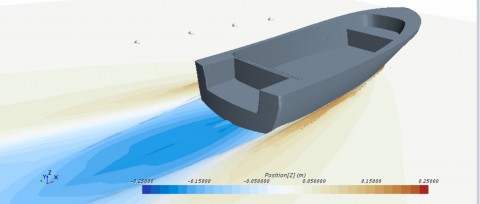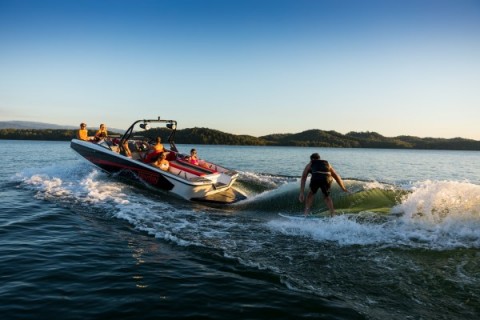Within a few years, it is possible that ordinary powerboats will appear out-of-time. Just like cars, powerboats will need to develop techniques to be less power-hungry and reduce emissions. This development will need to take into account not only engines and power-saving techniques, but basic concepts and hull shapes.
The analogy with cars presents one major limitation: A car will consume a lot of energy when accelerated to its cruising speed, but once it is rolling at constant speed on flat tarmac it will need relatively little to maintain its speed.
A powerboat, on the other hand, will need a constant supply of energy when running at speed, because of the resistance caused by its friction and wave-making. This resistance or ‘drag’ depends directly on its speed. This will limit what can be achieved by optimising engines and propulsion including the adoption of, for example, all-electric drivetrains.
To illustrate the point, take a look at a powerboat intentionally built to create a huge wake, and using the wake for surfboarding. It is obvious that this kind of wave will not come out of nowhere; creating it will consume huge amounts of energy.
One big factor which can be affected is the resistance itself. There is a new article here on optimising hull shapes, which obviously is one way to go. It focuses on the basic differences between hulls intended for planing speeds, and semi-planing speeds, and their respective limitations.
The short version is this:
- Planing powerboats do not behave well at speeds below planing.
- Semi-planing powerboats cannot go at planing speeds.
We have spent considerable effort to optimise powerboats to be able to go at any speed, both planing and semi-planing, and to do so with lower resistance.
 To make sure we were going in the right direction we have analysed the results with the most precise methods available – this is an example of a 24′ boat running at 22 knots:
To make sure we were going in the right direction we have analysed the results with the most precise methods available – this is an example of a 24′ boat running at 22 knots:
From these tests we got a series of reasonably accurate numbers for resistance and other parameters, at all sorts of different speeds. Link to article
Finally, we were able to test the results in full scale, in the new Nautus 7-50.

